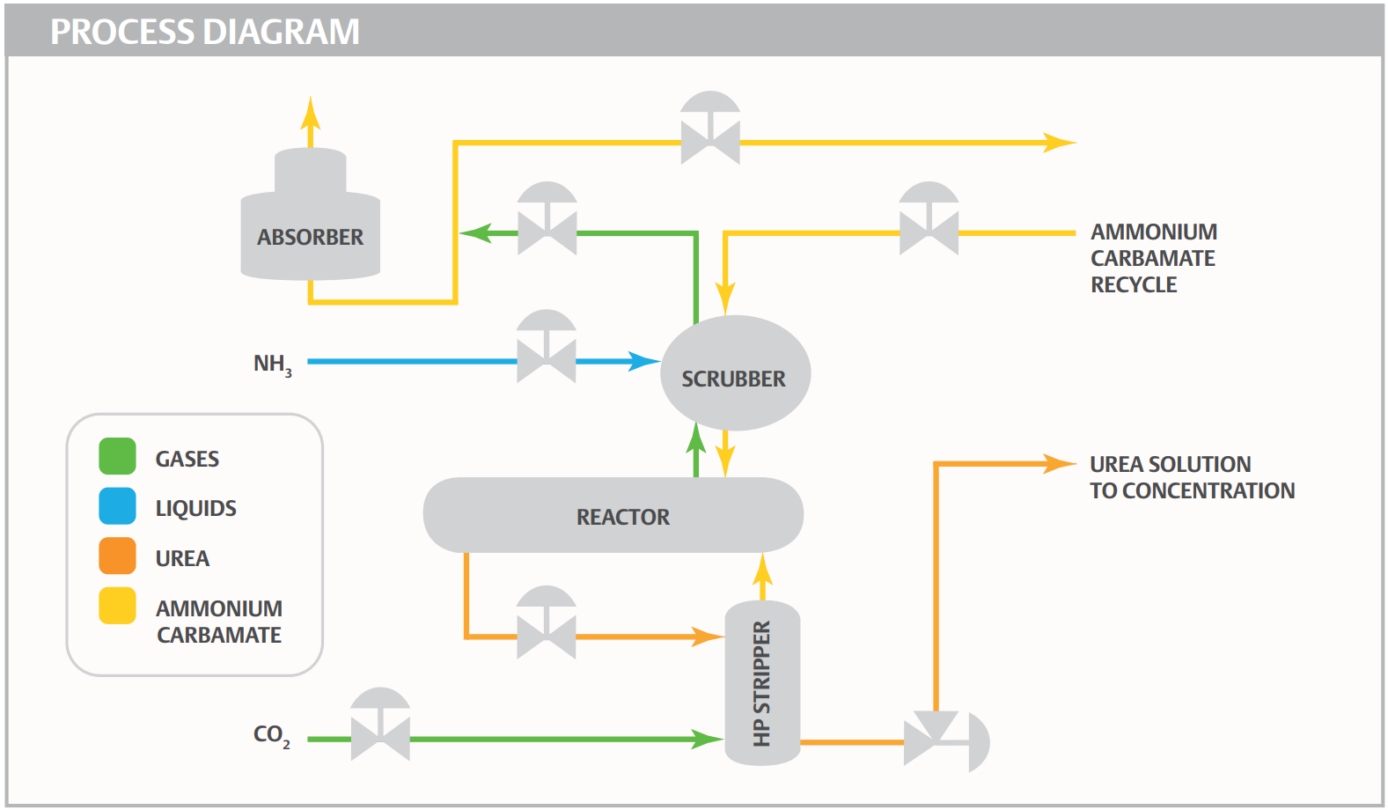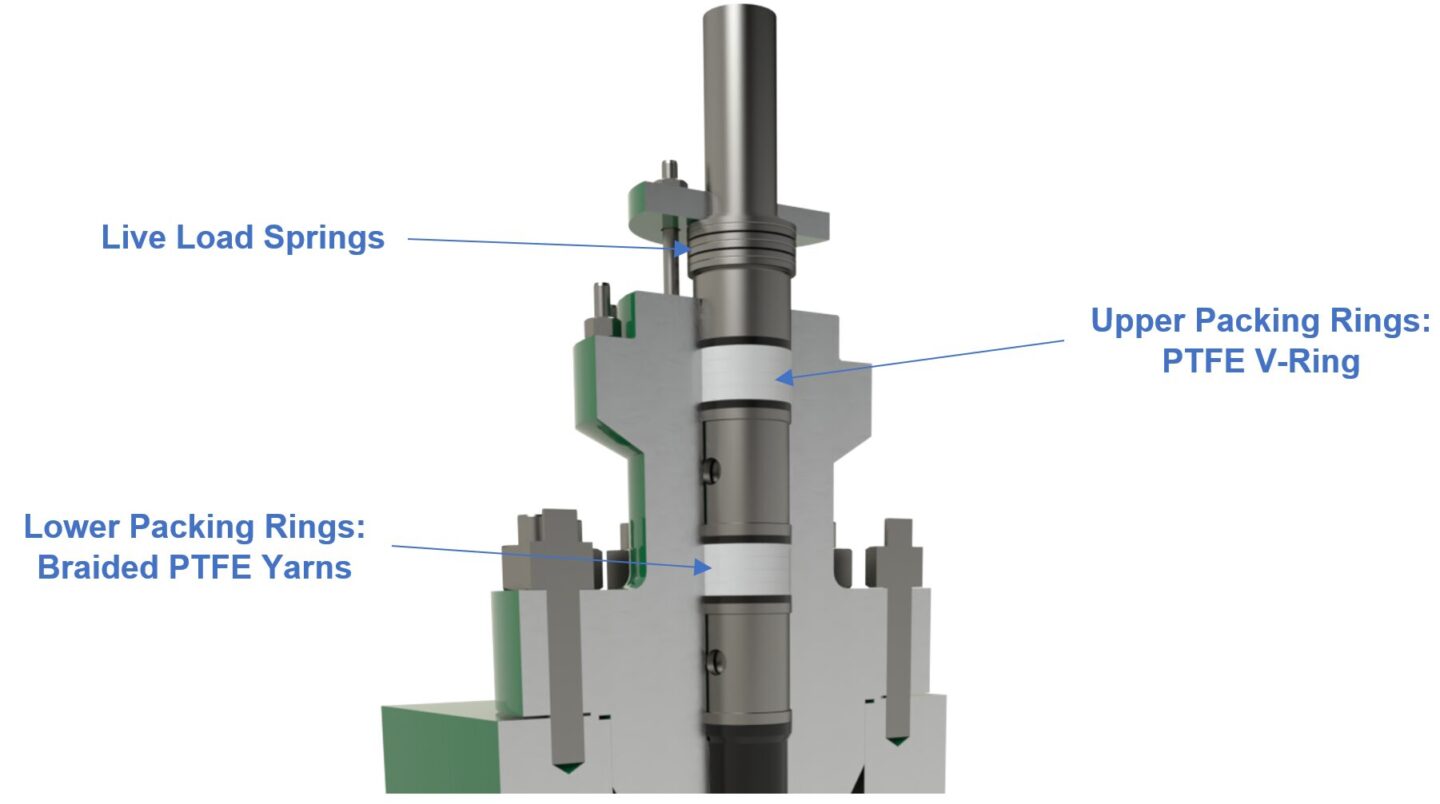The urea process poses extreme challenges for control valves, including high pressures and pressure drops, elevated temperatures, and corrosive carbamate solutions. Our article in the June 2025 issue of Hydrocarbon Processing, titled “New alternatives for severe service urea letdown valve applications,” describes recently introduced control valve designs that extend service life, simplify maintenance, and are more readily available than earlier valve solutions.
Urea valve challenges
The urea process starts with heated ammonia and carbon dioxide (CO2) injected into a high-pressure reactor. Under thousands of pounds of pressure, the ammonia and CO2 combine to create a very corrosive material called ammonium carbamate (carbamate), which then dehydrates to form urea.
After leaving the reactor, the solution of urea, water, carbamate, and unreacted CO2 and ammonia is fed into a stripper. Urea and condensed water leave the base of the stripper and are concentrated downstream, while the remaining carbamate is decomposed back into ammonia and CO2 for return to the reactor.

Figure 1. The urea process uses high pressure and heat in the pool reactor to combine ammonia and CO2 into carbamate and urea. The resulting very corrosive solution is passed through a control valve to the stripper. which recovers urea solution at the bottom of the vessel.
Carbamate acts much like a very aggressive acid, potentially reaching corrosion rates upwards of 1,000 mm/yr in carbon steel at high temperatures. Additionally, the reactor pressure letdown control valve is exposed to extreme pressure drops as the carbamate/urea solution is fed to the stripper, often resulting in very high velocities, two-phase flow, and extreme vibration. Highly specialized valves are required for such demanding conditions.
Limitations of existing solutions
Because urea plant process designs vary and change frequently, urea letdown service valves have historically been custom designed in most cases.
The valves usually employed a bonnetless design that could only be serviced by completely removing the valve to access the bottom loaded trim. Poor packing adjustment design and a lack of live-loaded packing tended to create leaks and valve stem damage.
In addition, obtaining quotes and parts for these specialty valves was often extremely difficult, and the equipment was usually very expensive with long lead times.
New alternatives
Fortunately, improved urea letdown valve designs are now available, with body and trim components manufactured from a broad selection of standard and proprietary alloys. The body design, dimensions, process connections, and flow characteristics can all be adjusted to meet application requirements.
When process conditions permit, a top-bonnet design can be employed to provide access to valve internals for inspection and service without removal from the line. Significant packing improvements, including live-loaded packing, reduced leakage and extended service life.

Figure 2. Live-loaded springs and a redundant packing seal design extend packing life and reduce leaks. Easily accessible packing adjustment bolts provide even loading and avoid stem galling. Packing purge ports are available, if required.
Other features include cageless trim and gasket-less seat ring designs to eliminate potential crevice corrosion, a contoured one piece forged plug and stem to extend service life, and optional body heat trace connections to eliminate cold spots and reduce localized process crystallization.
These valves are produced by a leading global manufacturer, providing quick worldwide access to parts, services and support.
Meeting the needs of diverse urea processes
Urea letdown valve applications pose vexing design problems, but new valve designs and materials offer significant improvements in service life, maintainability, and availability of parts and services. A wide range of customization options mean these valves can fit nearly any urea process, generating dramatic increases in plant uptime and simplifying maintenance.
Take your urea process performance to the next level. Learn how the Fisher™ EHU Control Valve is engineered to thrive in the harshest conditions—delivering exceptional corrosion resistance, simplified maintenance, and long-lasting reliability.